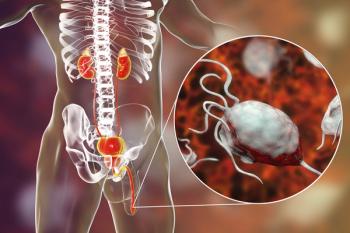
Oncology NEWS International
- Oncology NEWS International Vol 9 No 12
- Volume 9
- Issue 12
PCOS Shows Effects of Prostate Cancer Treatment on Patients’ Quality of Life
BETHESDA, Md-The National Cancer Institute has released a summary of published data derived so far from the Prostate Cancer Outcomes Study (PCOS), which seeks to determine the effect of various therapies for primary invasive prostate cancer on patients’ quality of life.
BETHESDA, MdThe National Cancer Institute has released a summary of published data derived so far from the Prostate Cancer Outcomes Study (PCOS), which seeks to determine the effect of various therapies for primary invasive prostate cancer on patients quality of life.
The summary contains information from follow-up questionnaires sent to about 3,500 men diagnosed with primary invasive prostate cancer during a 13-month period that began Oct. 1, 1994. The population was drawn from six NCI Surveillance, Epidemiology, and End Results (SEER) cancer registries.
The questionnaires, sent to study participants at 12, 24, and 60 months after their initial diagnosis, asked about such quality-of-life issues as urinary problems and sexual and bowel dysfunctions.
According to the NCI summary:
Men treated with radical prostatectomy for clinically localized prostate cancer are more likely to experience urinary and sexual dysfunction that those treated by external beam radiation therapy, while bowel dysfunction occurs more often among the radiation therapy patients (J Natl Cancer Inst 92:1582-1592, 2000).
Of 1,591 men treated for localized prostate cancer and followed-up at 2 years, 1,156 underwent radical prostatectomy and 435 had radiation therapy. Of the surgery patients, 9.6% reported urinary incontinence and 11.2% said they were bothered by it. Among the radiation therapy patients, the percentages were 3.5% and 2.3%, respectively.
More prostatectomy than radiotherapy patients suffered impotency, 79.6% vs 62.5%. However, the radiation patients reported more diarrhea (37.2% vs 20.9%) and more bowel urgency (35.7% vs 14.5% for the surgery patients).
Radical prostatectomy causes significant sexual dysfunction. At 24 months after surgery, 41.9% of patients described their impotency as a moderate to big problem (JAMA 283:354-360, 2000).
A small percentage of newly diagnosed prostate cancer patients show evidence of metastases when examined with bone scans, CT, or MRI.
Metastases were found in less than 5% of men with prostate-specific antigen (PSA) levels between 4 and 20 ng/mL and in less than 2% among those with Gleason scores of 6 or less. However, imaging studies were positive in more than 60% of men with PSA levels of 50 ng/mL or more and Gleason scores ranging from 8 to 10 (J Urology 163:1138-1143, 2000).
PSA, Gleason score, and age are the best predictors of metastases. The strongest predictive combination is a high PSA level, high Gleason score, and age older than 70. Prostate cancer had spread in 85% of men age 71 or older who had a PSA of 20 ng/mL or more and a Gleason score of 8 to 10 (J Urology 162:1341-1345, 1999).
Other analyses of PCOS data are in progress, and their results should be published within several years. They include the effects of different hormonal therapies on sexual function and general quality of life, factors associated with racial and ethnic differences in the diagnosis of advanced prostate cancer, factors that influence the use of different initial therapies for early prostate cancer, and treatments for sexual dysfunction.
Articles in this issue
about 25 years ago
Radiation Therapy After Mastectomy: Mistaken Assumptionsabout 25 years ago
Use Caution in Retinoid Chemoprevention Trialsabout 25 years ago
Antifolate + Platinum in Advanced NSCLCabout 25 years ago
Colorectal Cancer Screening Working, But Challenges Remain Remainabout 25 years ago
Faces Pain Scale Useful in Evaluating Pain in Younger Childrenabout 25 years ago
NIH Funds Two New CAM Cancer Therapy Research Centersabout 25 years ago
Most Cancer Patients Say They Are Unaware of Clinical Trials Surveyabout 25 years ago
Vessel Sealing Tool Effective in Laparoscopic Colon Surgeryabout 25 years ago
Use of EPA Improves Cachexia in Patients With Pancreatic Cancerabout 25 years ago
FDA Approves Trizivir, 3-Drug Anti-HIV ComboNewsletter
Stay up to date on recent advances in the multidisciplinary approach to cancer.


















































































